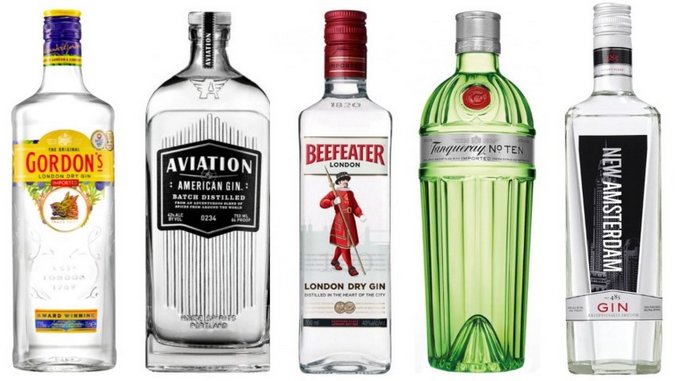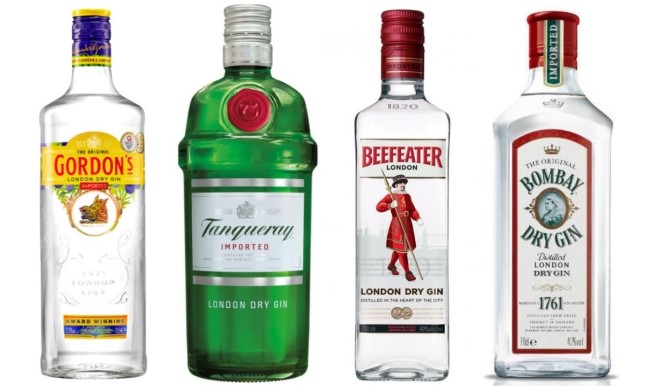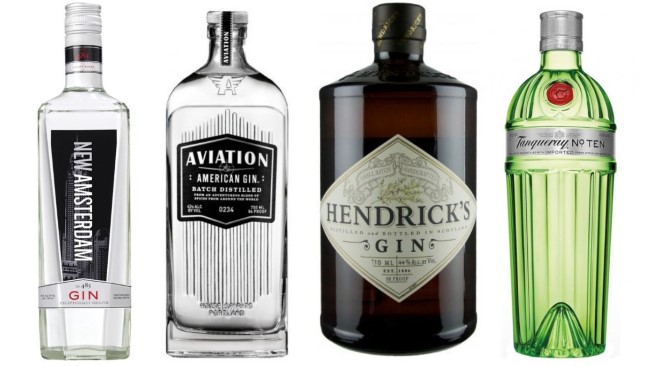Cocktail Queries: “London Dry” vs. Modern/“New Western” Gin
Photos via Diageo, Pernod Ricard, House Spirits Distillery, E & J Gallo Winery Drink Features gin
Cocktail Queries is a Paste series that examines and answers basic, common questions that drinkers may have about mixed drinks, cocktails and spirits. Check out every entry in the series to date.
When it comes to gin, drinkers tend to have a lot of preconceptions. Gin is “bitter.” It’s “piney.” It’s a sharp, bright, brittle spirit with an air of sleek elegance, and serves as the foundation of so many classic cocktails.
Not all gin, however, is created the same. There are many subdivisions within the category as a whole, and two labels in particular you’ve likely seen thrown around: “London dry gin” and “new western gin.” But what do those terms really imply in the modern liquor/cocktail scene? And how can you tell if a gin is one or the other, if it’s not clearly labeled?
Well, read on, and we’ll tell you. You may also want to check out our blind tasting of 10 cheap, bottom-shelf gins for $15 or less.
London Dry Gin

When the average consumer imagines “gin,” they’re probably thinking of London dry gin, as this was the predominant style for most of the 20th century, as the dusty old bottles of Beefeater in your parents’ liquor cabinet would attest. Most of the old warhorse/flagship gin brands fall under this classification: Bombay, Tanqueray, Gordon’s, Boodles, Seagram’s and many more, in addition to the aforementioned Beefeater. To many cocktail drinkers of the 1980s, 1990s and early 2000s, this was the sole expected definition of “gin.”
Which is funny, really, given that gin’s history long predates such a concept as “London dry.” The spirit’s first form is thought to have developed in the Middle Ages in Italy, before being refined into the beloved Dutch genever in The Netherlands by the 1500s. All such forms were defined by being distilled liquors that drew their primary flavor profile from infusions of juniper berry, often complemented by other herbs and spices. It wasn’t until the late 1600s, though, that widely produced commercial brands of distilled spirits began taking off, which also happens to be the first time that gin was finding a serious foothold in the U.K. Combined with new tariffs on French brandy following the Glorious Revolution of 1688, and incentives toward domestic distillation, what followed was a massive boom in British production of the new spirit known simply as “gin.” The early 1700s, in fact, went on to be known as the Gin Craze in the U.K., as rock bottom prices on newly available hard liquor led to a decades-long epidemic of public intoxication and eventual crackdown on gin. The spirit would ultimately be associated with the U.K. forevermore.
“London dry gin,” then, was simply the development of a drier, more bitter, less sweet alternative to more cloying early gins, which became associated with production in London. Today, the term can be applied to gins made in any location—they certainly don’t need to hail from the U.K. to be labeled “London dry.”
What do they taste like, though? Well, a classic London Dry gin (such as Gordon’s, for instance) is defined by the assertiveness of its juniper presence—without a strong backbone of juniper, it won’t ever qualify as London dry. Juniper contributes the “piney,” somewhat resinous, bitter character that drinkers often cite when describing the flavor of gin, but simply reducing it to that one descriptor minimizes the complexity of the juniper berry. Indeed, it also provides a distinctively fruity note, evoking violet florals and light berry fruitiness. These flavors are typically combined with myriad other botanicals in the distilling process, which range from spices like coriander, cardamom and peppercorns to various roots, herbs and aroma enhancers.
Given that variation, there is no particular, set profile for London dry gins, contrary to popular belief. Although all will feature prominent juniper, their supporting players can be completely different, and they can run the gamut from bone dry to slightly sweet, despite the “dry” in the name. The rise of craft distillers has only added to the shades of grey in this category, as the line of definition between “London dry” and “new western” gins has become more blurred.
When you’re opting for a classic Martini, though, London dry gin would be the only way to go.
New Western Gin

The term “new western gin” began to circulate in the 2000s, in order to describe the craft gins that had taken root in both the U.S.A. and abroad, which seemingly sought to upend the focus on juniper-dominated spirits. This is not a particularly well-defined term, but there’s one aspect of it that serves as a unifying ethos: New western gins seek to put the attention on the rest of the botanicals in addition to juniper. Note that they aren’t made without juniper, as it would be difficult to call that “gin” rather than flavored vodka. Rather, they recalibrate the balance between their botanicals, while also often carrying a higher level of residual sweetness to appeal to modern palates.
Some new western gin brands (such as New Amsterdam) do this by marketing themselves as seemingly the antithesis of the stuffy old alternative, strongly reducing juniper in favor of sweet, candy-like fruit impressions. Other popular American brands such as Aviation or St. George take a more measured approach, seeking to balance all of their botanicals at a happy medium. One thing that is particularly common in U.S.-produced new western gins is a focus on citrus fruits like lemon, orange and grapefruit—Americans find these flavors both enticing and familiar, so it has become very common for small, craft spirits producers to make a citrus-forward new western gin as a flagship product, ignoring the London dry style entirely. In fact, if an American craft distillery’s product is simply labeled as “gin,” it’s probably safe to say it’s a new western rather than London dry gin.
At the same time, however, the “new western” style also applies to many world gins outside the U.S. that also helped to broaden the category, and those gins are less likely to fit a common mold than the citrus bombs that have become common in America. Scotland’s Hendrick’s is one good example here, as its novel combination of cucumber and rose into a more traditional gin profile was something that sent deep ripples through the industry as it came to popularity in the 2000s. It was a sort of starting gun that led to a new wave of innovation in gin worldwide, and this has seen major producers of London dry gin release new western-style gins of their own, such as Tanqueray No. 10. Although there are definitely some that tow the line, one largely sort most standard gins into one of the two categories.
As for which of the categories you should drink, though, the answer is of course situational. There are some drinks that may call for additional sweetness and the citrus-forward nature of many modern American new western gins. And of course, there’s no replacing the bitter edge of juniper-dominant London dry gins in cocktails where you want there to be no doubt that gin is involved.
Now that you know the difference, though, we hope you’ll enjoy tasting these distinctions for yourself.
Jim Vorel is a Paste staff writer and resident liquor geek. You can follow him on Twitter for more drink writing.